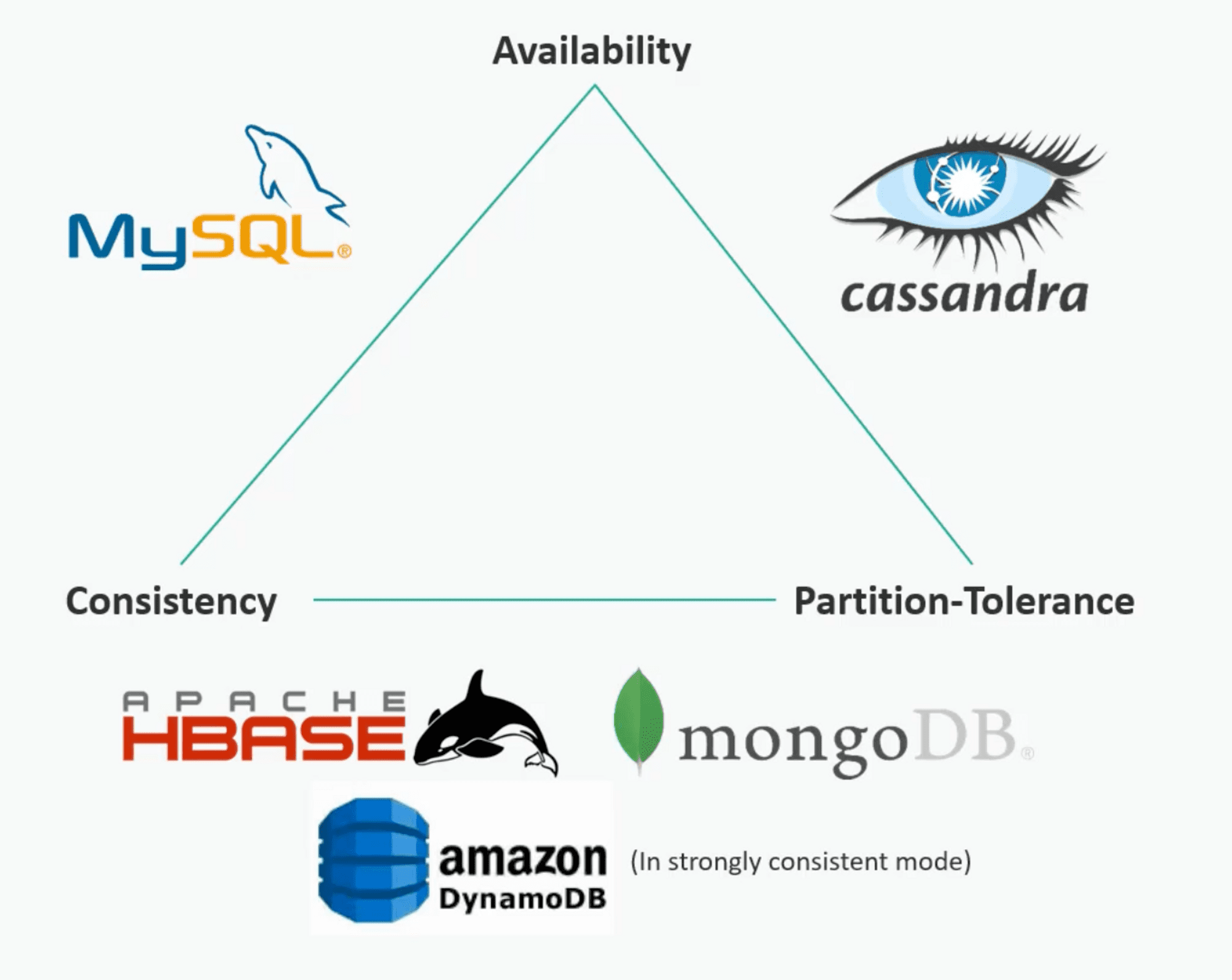꾸준함이 실력입니다.
One Two be super Developer-
[시스템 설계 (System Design) - 한번에 인터뷰 합격하기] 4강 : 모의 설계 인터뷰
이 글은 강의 내용을 토대로 작성하였습니다.
모의 면접 : URL 단축 서비스
301 vs 302
-
HTTP Status 301
요청한 리소스가 새로운 위치로 영구적으로 이동되었음을 뜻함
브라우저가 캐시 할 수 있음
-
HTTP Status 302
요청한 리소스가 일시적으로 다른 위치에 있음을 뜻함
매번 서버에 요청을 해야 함
-
-
[시스템 설계 (System Design) - 한번에 인터뷰 합격하기] 3강 : 설계 인터뷰 전략
이 글은 강의 내용을 토대로 작성하였습니다.
인터뷰 소프트 스킬
면접 전략
-
면접관은 기술적인 전문 지식만을 요구 X
문제 접근 방식 + 협업 방식도 중요시 여김
ex) 피드백을 받아들이는지?
-
-
[시스템 설계 (System Design) - 한번에 인터뷰 합격하기] 2강 : 빅데이터를 활용한 작업
-
[시스템 설계 (System Design) - 한번에 인터뷰 합격하기] 1강 : 확장 가능한 시스템 설계
이 글은 강의 내용을 토대로 작성하였습니다.
ACID 준수와 CAP 정리

-
일관성 (Consistency)
= Write 이후 Read 시 바로 값을 조회할 수 있느냐?
-
가용성 (Availability)
= 단일 고장 점(single point of failure, SPOF)이 존재하는가?
-
분할 허용성 (Partition Tolerance)
= 수평 스케일링이 쉽게 가능한가?
-
-
LeetCode : 448. Find All Numbers Disappeared in an Array
448. Find All Numbers Disappeared in an Array
Problem
Given an array nums of n integers where nums[i] is in the range [1, n], return an array of all the integers in the range [1, n] that do not appear in nums. Follow up: Could you do it without extra space and in O(n) runtime? You may assume the returned list does not count as extra space.
-
LeetCode : 209. Minimum Size Subarray Sum
209. Minimum Size Subarray Sum
Problem
Given an array of positive integers nums and a positive integer target, return the minimal length of a subarray whose sum is greater than or equal to target. If there is no such subarray, return 0 instead.
Recent Posts
- Cursor가 매일 수십억 건의 AI 코드 완성을 처리하는 방식
- A 레코드와 CNAME 레코드는 뭐가 다른걸까?
- 분산 시스템에서 순서가 보장되지 않은 이벤트를 다루는 전략
- DU(Disk Usage) 명령어를 아시나요?
- 2PC(Two-Phase Commit)란 무엇일까?
- DIG(Domain Information Groper) 명령어를 아시나요?
- 샤딩과 파티셔닝, 그 차이에 대하여
- LeetCode : 692. Top K Frequent Words
- Redis 서버에 접속중인 Client 목록 확인 방법
- LeetCode : 1299. Replace Elements with Greatest Element on Right Side
Categories
- Conference 11
- AlgorithmSkill 39
- DB 24
- Algorithm 175
- Crawling 1
- Node.js 15
- Linux 6
- AWS 11
- E.T.C 51
- Competition 5
- Python 26
- BlockChain 36
- MachineLearning 19
- 파일처리 14
- OS 12
- Server 31
- Docker 1
- Web 1
- JavaScript 18
- Network 39
- Git 6
- Technology 64
- DataStructure 1
- C/C++ 1
- HTTP 14
- Java 38
- Redis 9
- Retrospective 7
- Spring 72
- SpringBoot 16
- Kafka 26
- CleanCode 12
- TIL 4
- Blog 7
- Nginx 6
- MyBatis 6
- Regex 4
- EffectiveJava 2
- Spock 1
- Junit5 4
- Intellij 1
- CLI 1
- LeetCode 203
- MySQL 1
- JavaOptimizing 6
- Feign 1
- Karate 2
- Github 8
- SystemDesign 23
- Gradle 3
- Logback 3
- Kotlin 7
- CleanArchitecture 6
- Tech 6
